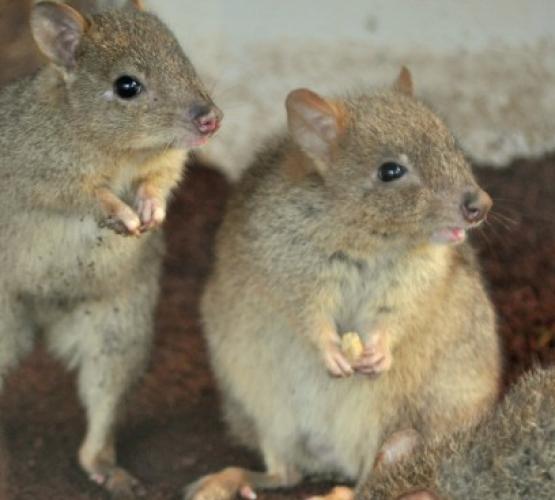- +61 8 9248 1984
-
WHITEMAN
19.2℃

Bettongia penicillata
Critically endangered
Approximately 1 Kilogram
Woylies are an omnivorous macropod, feeding on a wide variety of fungi, roots, tubers, herbs, grasses and insects.
Prior to European settlement this Bettong species was one of the most widespread in its family, inhabiting more than 60% of the mainland, they are now only found in the south-west of Australia.
The Brush-tailed Bettong, also known as the Woylie, is a small member of the kangaroo family, there is an estimated 5,000 left in the wild today; they are classified as critically endangered. The main cause of decline is predation by foxes and feral cats, they are also affected by habitat destruction. Prior to European settlement this Bettong species was one of the most widespread in its family, inhabiting more than 60% of the mainland, being found across most of Southern Australia, Northern WA and the Western parts of the Northern Territory. It is now found on less than 1%. Efforts are currently being made by the state to control foxes and re-introduce Woylies into suitable habitats and feral-proof areas. Woylies are an omnivorous macropod, feeding on a wide variety of fungi, roots, tubers, herbs, grasses and insects. They are pregnant for just 3 weeks, and then the joey will then remain in the pouch for 3.5 months. Female Woylies will often fall pregnant again and give birth within just a week of the previous joey leaving the pouch.